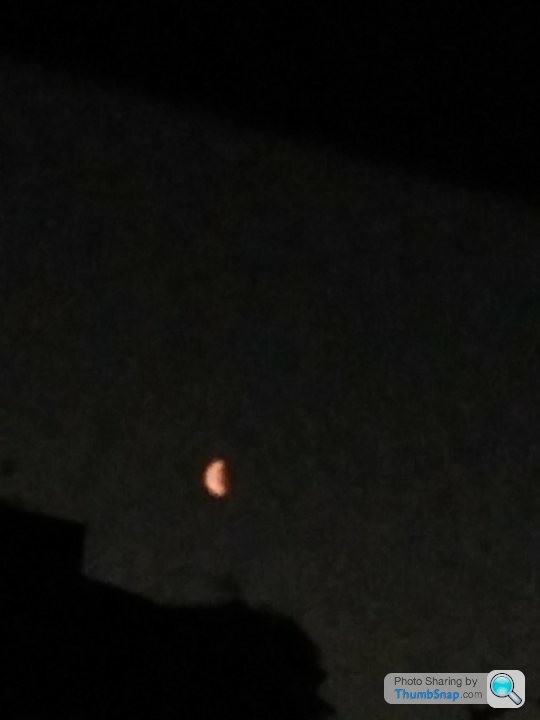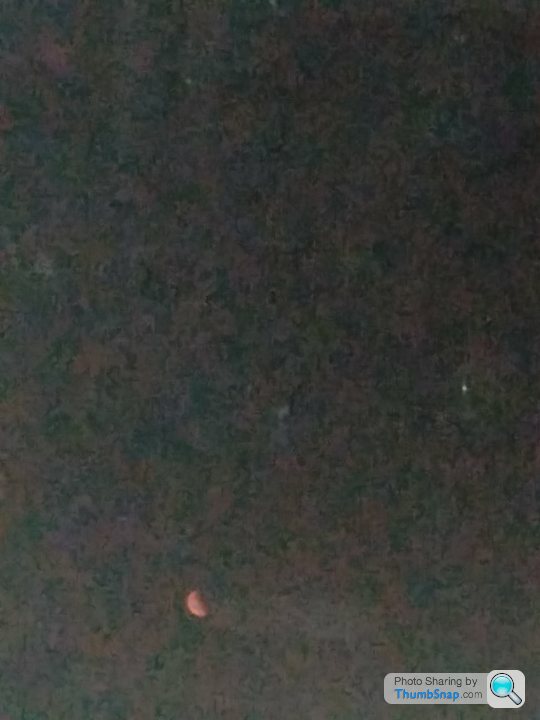Discussion
On Tuesday 11th August , i spotted from my bedroom a very red moon -never seen one like this .I called other family members and they confirmed it was definitely red.I checked online but there didn't appear to be any such event on this date of a blood moon.
It then disappeared under clouds and reemerged in its normal colour several minutes later.
Photos are crappy.
Any ideas from those more scientifically minded ?


It then disappeared under clouds and reemerged in its normal colour several minutes later.
Photos are crappy.
Any ideas from those more scientifically minded ?


Edited by tali1 on Tuesday 18th August 21:06
It’s mostly to do with the angle you’re viewing the moon and the amount of Earth’s atmosphere you have to see it through. The moon is most likely to look orange when it is low in the sky. That is when you are looking at it through more of the Earth’s atmosphere than when the moon is high in the sky.
And that atmosphere is filled with particles that absorb and scatter light. The shorter wavelengths of light are scattered more than longer wavelengths, so we see more of the latter. Longer wavelengths are more red, and so, when the light from the moon has to travel through more atmosphere and undergo more scattering, the moon appears redder in the sky.
And that atmosphere is filled with particles that absorb and scatter light. The shorter wavelengths of light are scattered more than longer wavelengths, so we see more of the latter. Longer wavelengths are more red, and so, when the light from the moon has to travel through more atmosphere and undergo more scattering, the moon appears redder in the sky.
Ructions said:
It’s mostly to do with the angle you’re viewing the moon and the amount of Earth’s atmosphere you have to see it through. The moon is most likely to look orange when it is low in the sky. That is when you are looking at it through more of the Earth’s atmosphere than when the moon is high in the sky.
And that atmosphere is filled with particles that absorb and scatter light. The shorter wavelengths of light are scattered more than longer wavelengths, so we see more of the latter. Longer wavelengths are more red, and so, when the light from the moon has to travel through more atmosphere and undergo more scattering, the moon appears redder in the sky.
Possible -although Ive lived in that road for 43 years -it is first time i have seen it like that.And that atmosphere is filled with particles that absorb and scatter light. The shorter wavelengths of light are scattered more than longer wavelengths, so we see more of the latter. Longer wavelengths are more red, and so, when the light from the moon has to travel through more atmosphere and undergo more scattering, the moon appears redder in the sky.
Gassing Station | Science! | Top of Page | What's New | My Stuff



